NoSQL Databases and Their Use Cases
KDnuggets
MARCH 16, 2023
Learn about NoSQL Databases and their types like key-value, document, graph and column family with their use cases.
This site uses cookies to improve your experience. To help us insure we adhere to various privacy regulations, please select your country/region of residence. If you do not select a country, we will assume you are from the United States. Select your Cookie Settings or view our Privacy Policy and Terms of Use.
Cookies and similar technologies are used on this website for proper function of the website, for tracking performance analytics and for marketing purposes. We and some of our third-party providers may use cookie data for various purposes. Please review the cookie settings below and choose your preference.
Used for the proper function of the website
Used for monitoring website traffic and interactions
Cookies and similar technologies are used on this website for proper function of the website, for tracking performance analytics and for marketing purposes. We and some of our third-party providers may use cookie data for various purposes. Please review the cookie settings below and choose your preference.

KDnuggets
MARCH 16, 2023
Learn about NoSQL Databases and their types like key-value, document, graph and column family with their use cases.
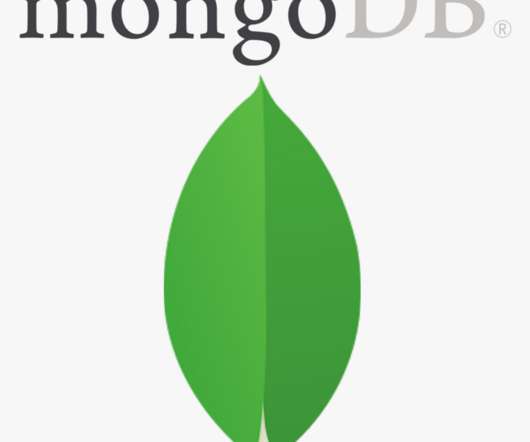
Analytics Vidhya
DECEMBER 13, 2022
Introduction MongoDB is a type of NoSQL Database, that stores data in document format(bson or binary json format). Its advantage over traditional SQL Databases includes the flexibility of schema-design, relaxation of its ACID properties and its distributed data storage capability thus performing better for […].
This site is protected by reCAPTCHA and the Google Privacy Policy and Terms of Service apply.
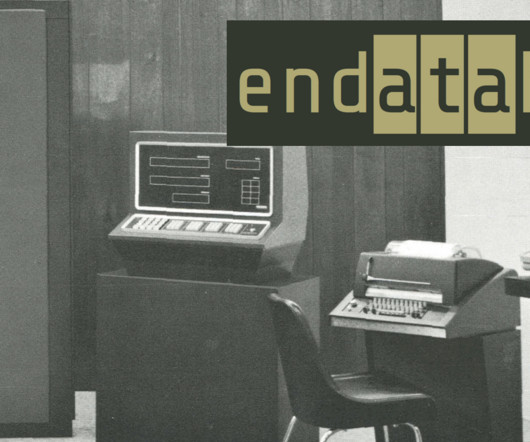
Hacker News
FEBRUARY 28, 2024
SQL Document Database with Full History
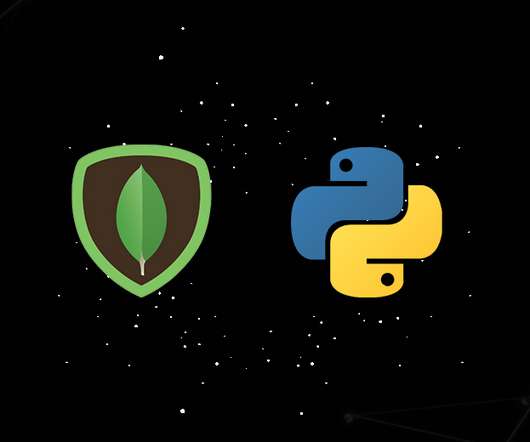
Analytics Vidhya
APRIL 12, 2021
Introduction MongoDB is a free open-source No-SQL document database. ArticleVideo Book This article was published as a part of the Data Science Blogathon. The post How To Create An Aggregation Pipeline In MongoDB appeared first on Analytics Vidhya.

Analytics Vidhya
JULY 18, 2022
Introduction Elasticsearch is primarily a document-based NoSQL database, meaning developers do not need any prior knowledge of SQL to use it. Still, it is much more than just a NoSQL database. This article was published as a part of the Data Science Blogathon.

Data Science Dojo
APRIL 6, 2023
While Python and R are popular for analysis and machine learning, SQL and database management are often overlooked. However, data is typically stored in databases and requires SQL or business intelligence tools for access. Through this guide, we give you a larger picture to get started with your database journey.

AWS Machine Learning Blog
NOVEMBER 20, 2024
Whether it’s structured data in databases or unstructured content in document repositories, enterprises often struggle to efficiently query and use this wealth of information. The solution combines data from an Amazon Aurora MySQL-Compatible Edition database and data stored in an Amazon Simple Storage Service (Amazon S3) bucket.
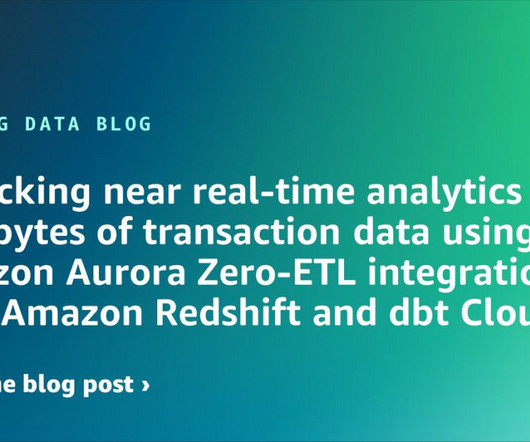
NOVEMBER 27, 2024
While customers can perform some basic analysis within their operational or transactional databases, many still need to build custom data pipelines that use batch or streaming jobs to extract, transform, and load (ETL) data into their data warehouse for more comprehensive analysis. or a later version) database.

Data Science Dojo
MARCH 25, 2024
MySQL is a popular database management system that is used globally and across different domains. It is one of the most popular database management systems (DBMS) globally that supports all major operating systems: Linux, macOS, and Windows. Databases are stored on a server, which is typically a remote computer or a cloud server.
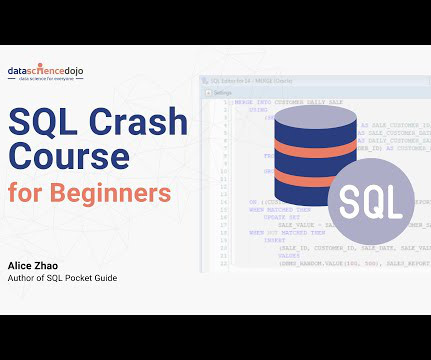
Data Science Dojo
MARCH 25, 2024
MySQL is a popular database management system that is used globally and across different domains. It is one of the most popular database management systems (DBMS) globally that supports all major operating systems: Linux, macOS, and Windows. Databases are stored on a server, which is typically a remote computer or a cloud server.
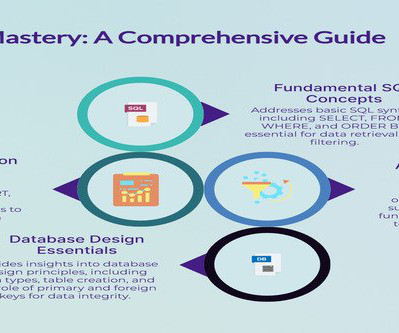
Pickl AI
APRIL 4, 2025
Summary: The SQL Cheat Sheet provides a handy reference for mastering SQL commands. It covers database creation, querying data using SELECT and WHERE, joins, data manipulation with INSERT and UPDATE, and advanced operations like transactions and constraints. Let’s dive in! Populating it with data. Modifying existing data.

Pickl AI
NOVEMBER 3, 2024
Summary: Pattern matching in SQL enables users to identify specific sequences of data within databases using various techniques such as the LIKE operator and regular expressions. SQL provides several techniques for pattern matching, enabling users to efficiently query databases and extract meaningful insights.
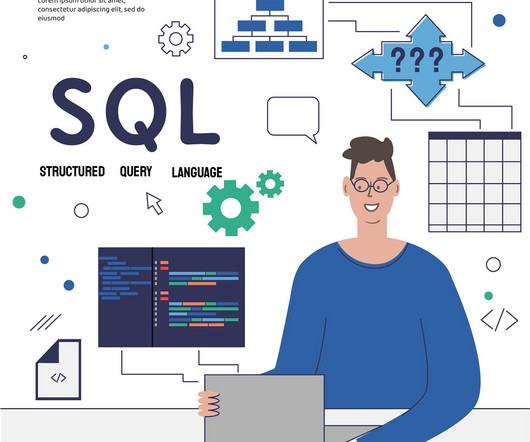
Dataconomy
SEPTEMBER 16, 2024
The SQL language, or Structured Query Language, is essential for managing and manipulating relational databases. Introduction to SQL language SQL language stands for Structured Query Language. It was designed to retrieve and manage data stored in relational databases. Why learn SQL language?

Analytics Vidhya
JANUARY 30, 2023
Whether we are analyzing IoT data streams, managing scheduled events, processing document uploads, responding to database changes, etc. Azure functions allow developers […] The post How to Develop Serverless Code Using Azure Functions? appeared first on Analytics Vidhya.
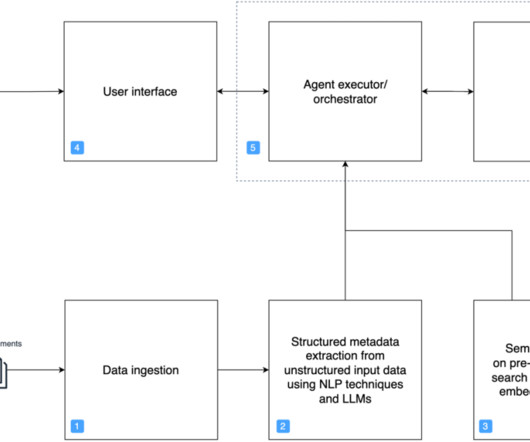
AWS Machine Learning Blog
DECEMBER 6, 2023
Such data often lacks the specialized knowledge contained in internal documents available in modern businesses, which is typically needed to get accurate answers in domains such as pharmaceutical research, financial investigation, and customer support. For example, imagine that you are planning next year’s strategy of an investment company.
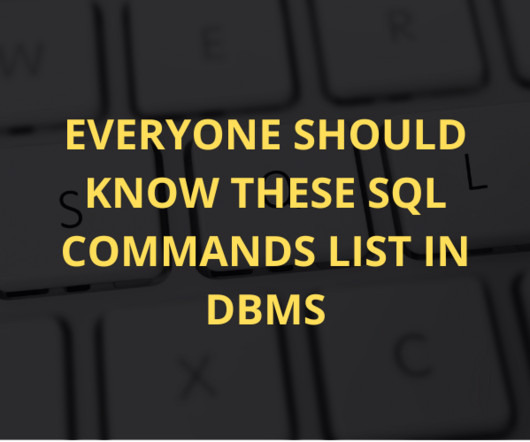
Pickl AI
MARCH 21, 2025
Summary: SQL commands list in DBMS help manage databases efficiently. Learn how to create, modify, retrieve, and secure data using SQL. Take your SQL skills to the next level with Pickl.AIs Data Science courses. In simple words, SQL ( Structured Query Language ) is used to manage and organise data in databases.

Data Science Dojo
MAY 1, 2023
The package is particularly well-suited for working with tabular data, such as spreadsheets or SQL tables, and provides powerful data cleaning, transformation, and wrangling capabilities. SQLAlchemy SQLAlchemy is a Python package that serves as both a SQL toolkit and an Object-Relational Mapping (ORM) library.

Smart Data Collective
AUGUST 9, 2022
One of the most important things companies need is a database. NoSQL databases are the alternative to SQL databases. Today we’ll discuss what NoSQL databases are, what types of them exist, as well as their advantages and disadvantages they offer to data-driven businesses. What are the types of NoSQL databases?

Towards AI
JANUARY 29, 2025
Retrieval Augmented Generation generally consists of Three major steps, I will explain them briefly down below – Information Retrieval The very first step involves retrieving relevant information from a knowledge base, database, or vector database, where we store the embeddings of the data from which we will retrieve information.

Dataconomy
AUGUST 7, 2023
Artificial intelligence is no longer fiction and the role of AI databases has emerged as a cornerstone in driving innovation and progress. An AI database is not merely a repository of information but a dynamic and specialized system meticulously crafted to cater to the intricate demands of AI and ML applications.

Smart Data Collective
DECEMBER 13, 2021
Tracking how your database is performing should be on the top of the to-do list for any administrator. There are several steps to take, and many considerations to take onboard, when building your own SQL Server monitoring strategy, so here are just a few pieces of guidance that will help you avoid common pitfalls.

Analytics Vidhya
MAY 31, 2023
Introduction In this guide, we will explore the fundamentals of MongoDB and delve into the essential CRUD (Create, Read, Update, Delete) operations that form the backbone of any database system.

Data Science Blog
SEPTEMBER 19, 2023
Documentation and Disaster Recovery Made Easy Data is the lifeblood of any organization, and losing it can be catastrophic. The following Terraform script will create an Azure Resource Group, a SQL Server, and a SQL Database. So why using IaC for Cloud Data Infrastructures?

AWS Machine Learning Blog
NOVEMBER 15, 2024
This centralized system consolidates a wide range of data sources, including detailed reports, FAQs, and technical documents. The system integrates structured data, such as tables containing product properties and specifications, with unstructured text documents that provide in-depth product descriptions and usage guidelines.

AWS Machine Learning Blog
JUNE 20, 2024
The data is stored in a data lake and retrieved by SQL using Amazon Athena. The following figure shows a search query that was translated to SQL and run. Data is normally stored in databases, and can be queried using the most common query language, SQL. Constructing SQL queries from natural language isn’t a simple task.

Dataconomy
APRIL 27, 2023
What is an online transaction processing database (OLTP)? But the true power of OLTP databases lies beyond the mere execution of transactions, and delving into their inner workings is to unravel a complex tapestry of data management, high-performance computing, and real-time responsiveness.
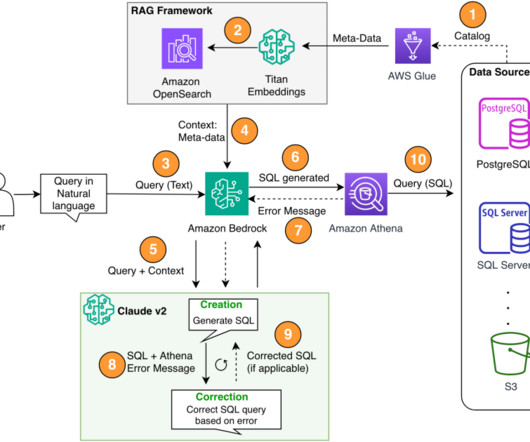
AWS Machine Learning Blog
FEBRUARY 28, 2024
Structured Query Language (SQL) is a complex language that requires an understanding of databases and metadata. Today, generative AI can enable people without SQL knowledge. With the emergence of large language models (LLMs), NLP-based SQL generation has undergone a significant transformation.
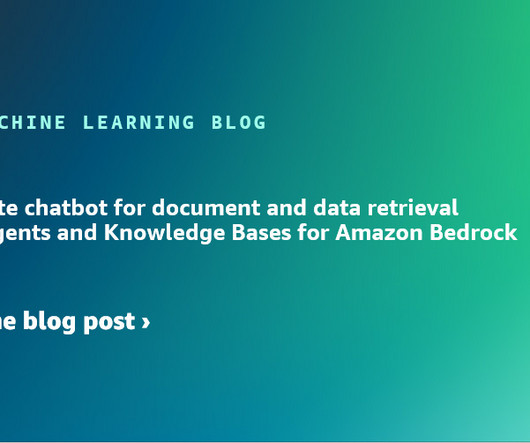
AWS Machine Learning Blog
MAY 1, 2024
This post presents a solution for developing a chatbot capable of answering queries from both documentation and databases, with straightforward deployment. For documentation retrieval, Retrieval Augmented Generation (RAG) stands out as a key tool. Virginia) AWS Region. The following diagram illustrates the solution architecture.

Hacker News
DECEMBER 1, 2023
Comments (..)

AWS Machine Learning Blog
DECEMBER 11, 2024
This enables sales teams to interact with our internal sales enablement collateral, including sales plays and first-call decks, as well as customer references, customer- and field-facing incentive programs, and content on the AWS website, including blog posts and service documentation.
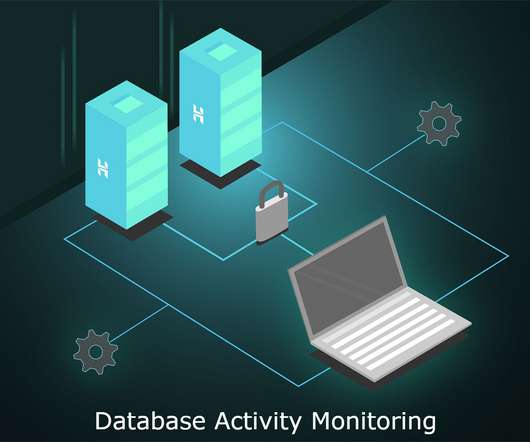
Smart Data Collective
FEBRUARY 20, 2022
Since databases store companies’ valuable digital assets and corporate secrets, they are on the receiving end of quite a few cyber-attack vectors these days. How can database activity monitoring (DAM) tools help avoid these threats? What is the role of machine learning in monitoring database activity? How do DAM solutions work?
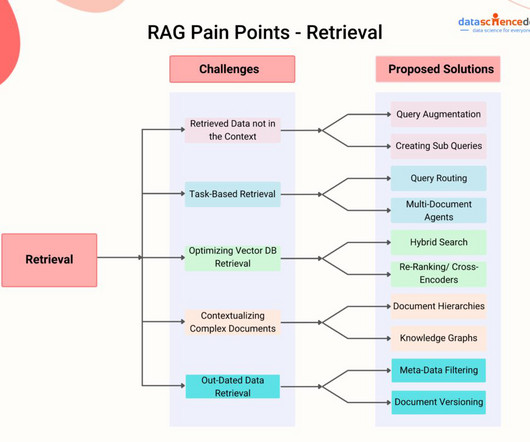
Data Science Dojo
MARCH 29, 2024
Usually, the ingestion stage consists of the following steps: Collect data Chunk data Generate vector embeddings of chunks Store vector embeddings and chunks in a vector database The efficiency and effectiveness of the data ingestion phase significantly influence the overall performance of the system. Finding the optimal balance is crucial.

Towards AI
MARCH 7, 2024
Instead, we will leverage LangChain’s SQL Agent to generate complex database queries from human text. The documents should contain data with a bunch of specifications, alongside more fluid, natural language descriptions. Analyze the content of each document using GPT to parse it into JSON objects. I’m using Python 3.11.

AWS Machine Learning Blog
MARCH 10, 2025
The traditional approach of manually sifting through countless research documents, industry reports, and financial statements is not only time-consuming but can also lead to missed opportunities and incomplete analysis. This event-driven architecture provides immediate processing of new documents.

AWS Machine Learning Blog
AUGUST 30, 2024
In this post, we provide an overview of the Meta Llama 3 models available on AWS at the time of writing, and share best practices on developing Text-to-SQL use cases using Meta Llama 3 models. Meta Llama 3’s capabilities enhance accuracy and efficiency in understanding and generating SQL queries from natural language inputs.

Hacker News
FEBRUARY 16, 2024
call functions), read documents, and recursively call themselves. In this work, we show that LLM agents can autonomously hack websites, performing tasks as complex as blind database schema extraction and SQL injections without human feedback. As a result, these LLMs can now function autonomously as agents.
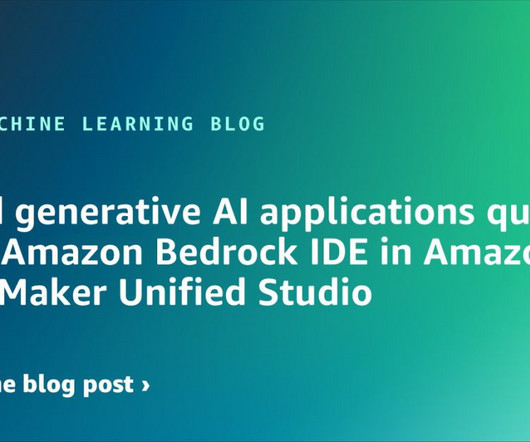
AWS Machine Learning Blog
DECEMBER 4, 2024
They have structured data such as sales transactions and revenue metrics stored in databases, alongside unstructured data such as customer reviews and marketing reports collected from various channels. Use Amazon Athena SQL queries to provide insights.

IBM Data Science in Practice
JANUARY 13, 2025
The source data is unstructured JSON, while the target is a structured, relational database. In the past year, the serverless pipelines were constrained by the size of the source database. Database size limits of 10GB. Loading huge Databases requires manualslicing. No parallel processing. Hosted Query EngineLimits.

Pickl AI
JULY 27, 2023
What is SQL? SQL stands for Structured Query Language. It is a standard programming language used for managing and manipulating relational databases. Here are some of the main features of SQL: Data Querying: SQL allows users to retrieve specific data from a database using the SELECT statement.

Smart Data Collective
SEPTEMBER 26, 2021
The raw data can be fed into a database or data warehouse. There are countless implementations to choose from, including SQL and NoSQL databases. A NoSQl database can use documents for the storage and retrieval of data. The central concept is the idea of a document. A document is susceptible to change.
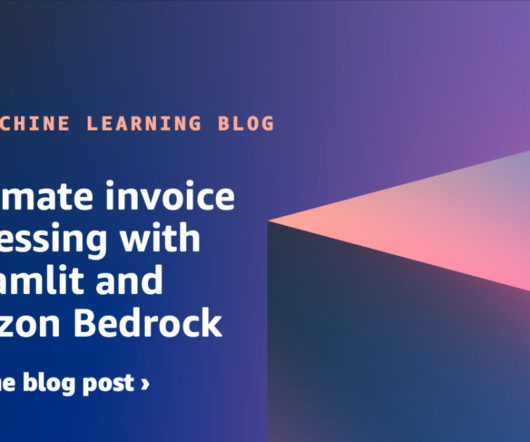
AWS Machine Learning Blog
NOVEMBER 14, 2024
Solution overview This solution uses the Amazon Bedrock Knowledge Bases chat with document feature to analyze and extract key details from your invoices, without needing a knowledge base. Importantly, your document and data are not stored after processing. Install Python 3.7 or later on your local machine.
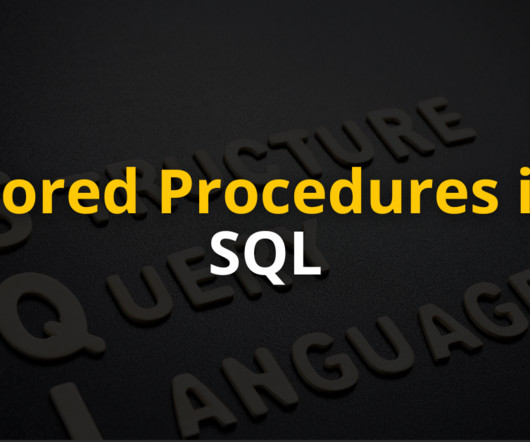
Pickl AI
DECEMBER 19, 2024
Summary: Stored procedure in SQL encapsulate reusable SQL code for efficient database management. Following best practices like error handling and version control ensures scalable, maintainable, and secure solutions for modern database operations. billionmastering these tools is essential for modern database management.

Towards AI
DECEMBER 10, 2024
Created by the author Before the generative AI boom, the main way to search documents and company knowledge bases was either full-text search engines, like Apache Lucene, Elasticsearch, and Solr, or similar features in database engines, like Microsoft SQL Full Text Search, primitive keyword-based search or hardcore ML/ DataScience stuff.
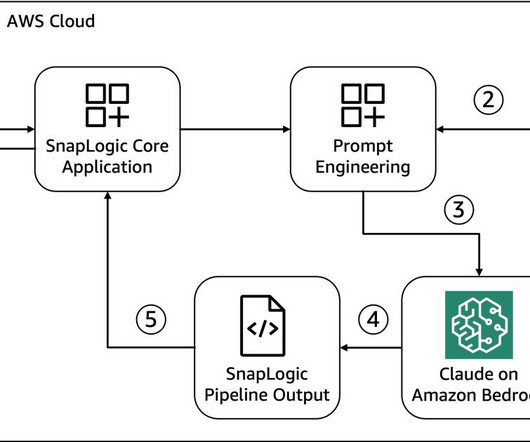
NOVEMBER 24, 2023
This use case highlights how large language models (LLMs) are able to become a translator between human languages (English, Spanish, Arabic, and more) and machine interpretable languages (Python, Java, Scala, SQL, and so on) along with sophisticated internal reasoning.
Expert insights. Personalized for you.
We have resent the email to
Are you sure you want to cancel your subscriptions?


Let's personalize your content